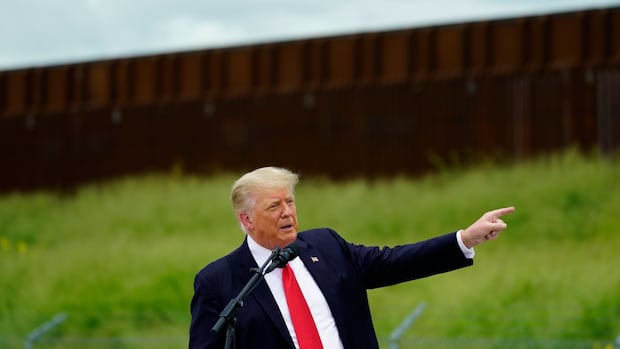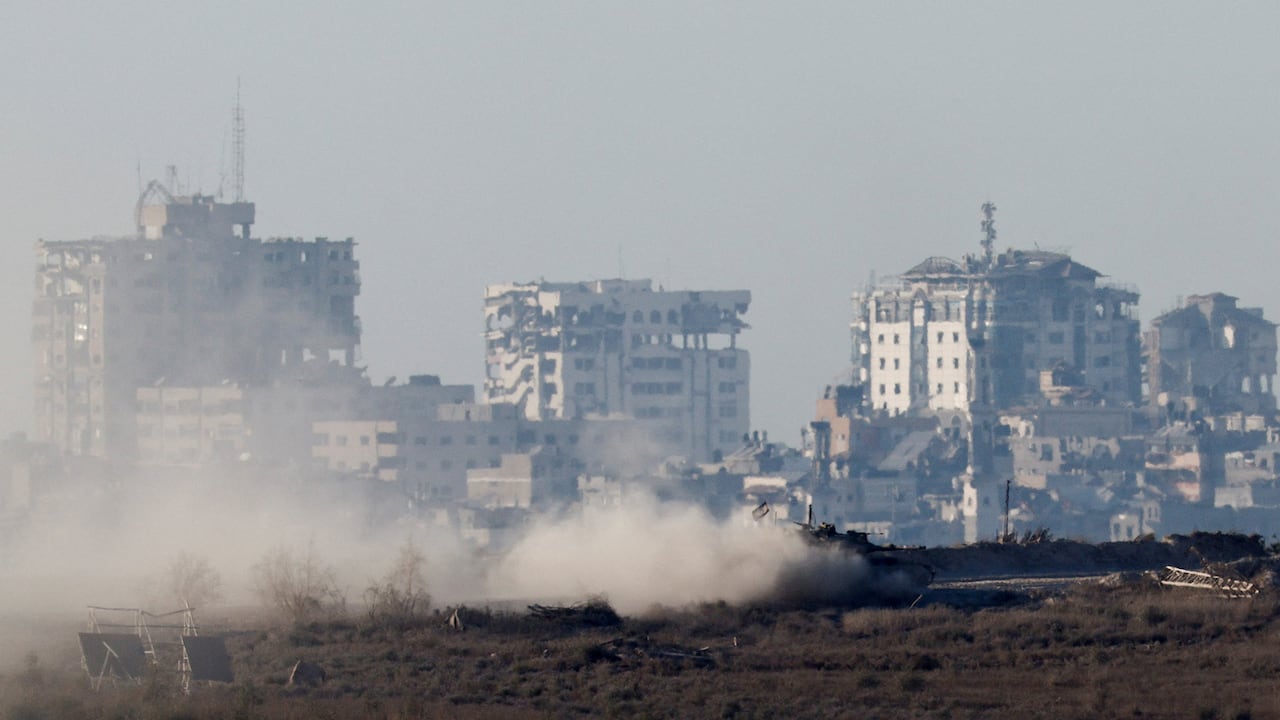U.S. President Donald Trump’s administration is once again touting black paint on border walls to deter illegal migration — a questionable and expensive proposition.
U.S. Homeland Security Secretary Kristi Noem said Tuesday the entire border wall along the country’s southern border with Mexico is going to be painted black, The Associated Press reported, during a visit to a portion of the wall in New Mexico, where she also picked up a paint roller to help with the painting.
She touted the wall’s height and depth as ways to deter people seeking to go over or under it. Noem also said Homeland Security was going to be trying black paint to make the metal hotter.
“That is specifically at the request of the president, who understands that in the hot temperatures down here, when something is painted black, it gets even warmer and it will make it even harder for people to climb. So we are going to be painting the entire southern border wall black to make sure that we encourage individuals to not come into our country illegally,” Noem said.
U.S. Border Patrol Chief Mike Banks, who attended the event with Noem, said the paint would also help deter rust.
Trump, in a news conference while a private citizen in 2021, said of the wall: “If they don’t paint it, bad things are happening.”
“The best colour to paint it is black, because if you paint it black, it’s so hot, nobody can even try to climb it,” he said then, near a Texas-Mexico border location while alongside state Gov. Greg Abbott.
Today marks seven months of @POTUS Trump’s second term. When we got to work, America faced the worst border crisis in history. Today, that crisis isn’t just under control— it’s been obliterated.
This wall is part of the difference. Too high to climb. Too narrow to squeeze… pic.twitter.com/pPxfVWVSCU
—@Sec_Noem
Billions for Homeland Security
Building additional barriers along the 3,145-kilometre southern U.S. border has been a signature pledge for Trump since he first brought up the notion of a “fence” at the Iowa Freedom Summit in January 2015, five months before his first presidential campaign launch.
Comprehensive immigration reform packages that would have included significant border wall funding in his first term did not come to pass in early 2018, with Democrats and Republicans exchanging accusations as to who was to blame for that failure.
Just before Christmas in 2018, Trump then initiated what would become a 35-day government shutdown, affecting 800,000 federal employees, in order to get $5.7 billion US in funding for 375 kilometres of border wall. Ultimately, only $1.375 billion for about 90 kilometres was allocated.
Trump then declared a national emergency at the southern border, which allowed him to deploy members of the U.S. military to support front-line border officials. Trump cited both unlawful migration and the flow of drugs into the U.S. from Mexico and Latin America, though analyses, including from his own government agencies, assess that most drugs and their precursors get smuggled into the country through legal ports of entry.
It was estimated that 60 kilometres worth of new wall construction — as opposed to refurbishing or replacement of existing structures — was built during Trump’s first term, based on a Customs and Border Protection report in the final weeks of his administration.
One of U.S. President Donald Trump’s first executive orders declared a national emergency at the border with Mexico, which will see the military deployed and the deportation of millions of undocumented migrants.
During his second term, Trump’s mass deportation agenda, with arrests in the interior of the country, has been the main focus. But he declared a national emergency at the southern border again in his first days in office, and Homeland Security will be getting about $46 billion US of new funding passed by Congress this summer in Trump’s budget bill.
The non-profit American Immigration Council said in a statement after the bill passed that it was “more than three times what the Trump administration spent in its first term despite the failure of the wall to improve or contribute in any meaningful way to a border management strategy.”
Noem said they have been building hundreds of metres of barrier every day.
“The border wall will look very different based on the topography and the geography of where it is built,” she said.
She said in addition to barriers like the one she visited Tuesday, the department is also working on “water-borne infrastructure.” Long sections of the border between the U.S. and Mexico sit along the Rio Grande River in Texas.
The Trump administration is pushing forward with more wall construction at the same time that the number of people crossing the border illegally has plummeted — a process that began after Mexican authorities in 2024 increased enforcement and then-president Joe Biden introduced severe asylum restrictions in June.
Texas, one of four states that borders Mexico, has stopped putting new money of its own toward building a U.S.-Mexico border wall, with Abbott’s office crediting Trump’s aggressive efforts in his second term to curb immigration as allowing the state to adjust.
It had been a multibillion-dollar priority for Abbott as part of a sprawling immigration crackdown. He even took the unusual step in 2021 of soliciting private donations for construction.
The Washington Post reported on Trump’s interest in black paint for border structures in 2019. Border Wars: Inside Trump’s Assault on Immigration, published later that same year and citing administration officials, claimed that Trump in meetings floated several ideas he thought would help deter unwanted arrivals, including “flat black” paint, spikes atop border walls and fencing, and even a moat in some areas.
Trump angrily denied the report and said it was “written by Washington Post people, so you know it’s inaccurate,” while also blasting Post owner Jeff Bezos.
The book was actually written by New York Times reporters Julie Hirschfeld Davis and Michael D. Shear.
But the Post, citing government contracting estimates it had viewed, did report in 2020 that black paint could cost at least $500 million US, and possibly into the low billions, depending on the type of paint and the number of coats.
A building expert who spoke to the Post for that article told the outlet that unpainted metal in the desert already absorbs a significant degree of heat, and that there’s “no technical reason” black paint would make it much hotter. Black paint can also fade over time, affecting its emissivity, the expert said.




